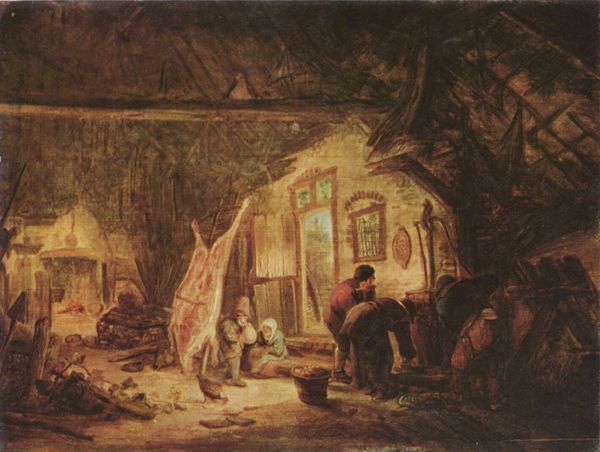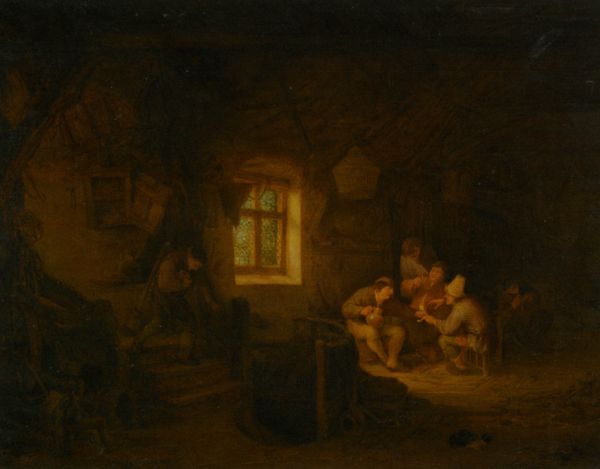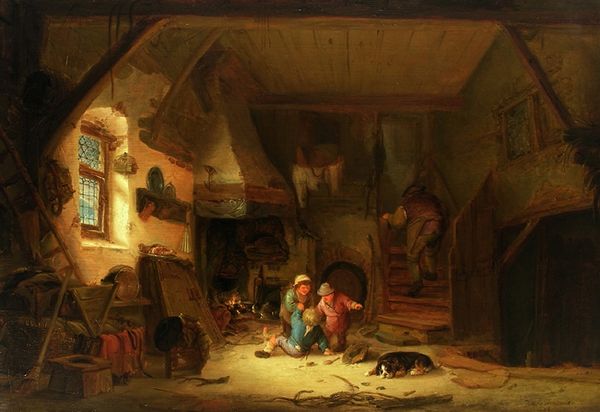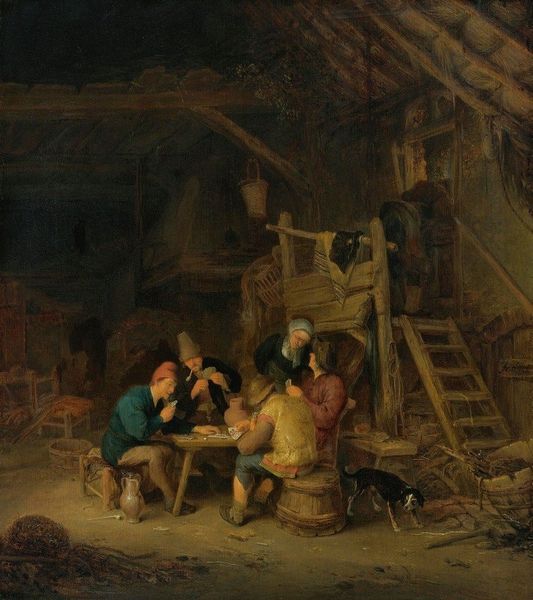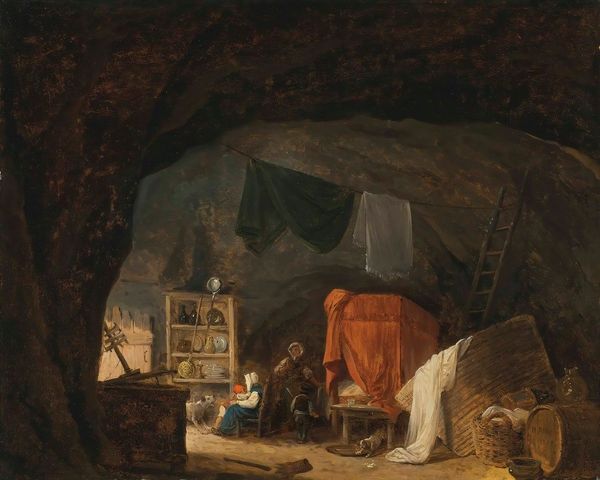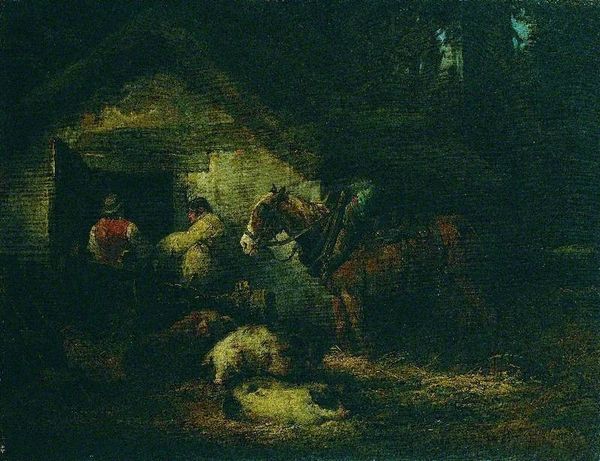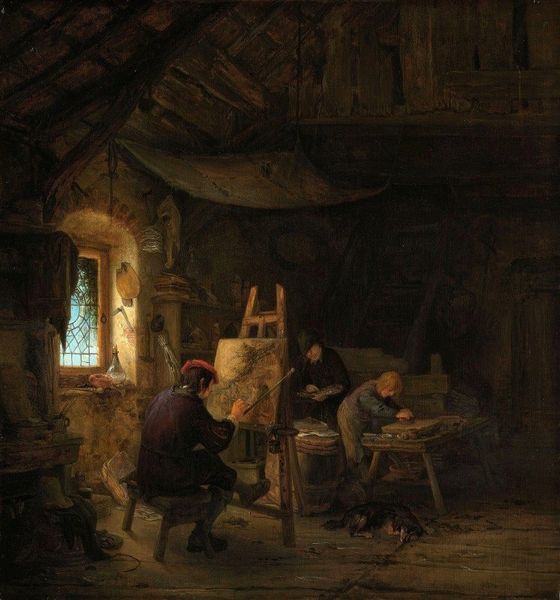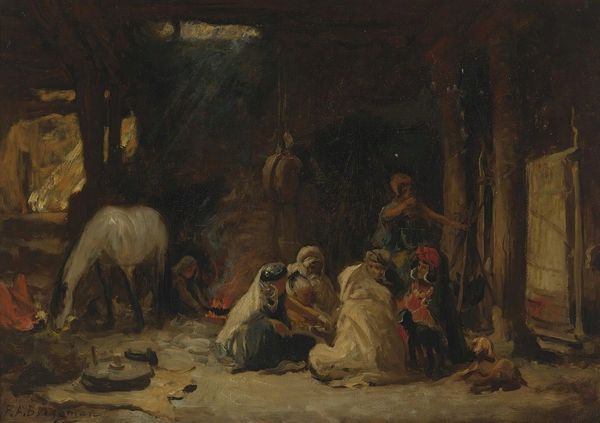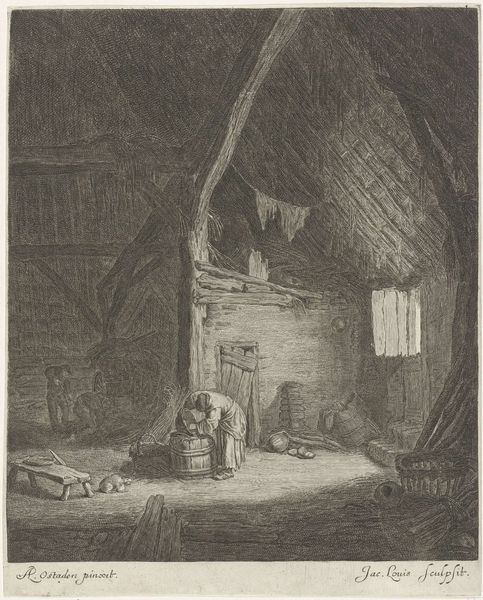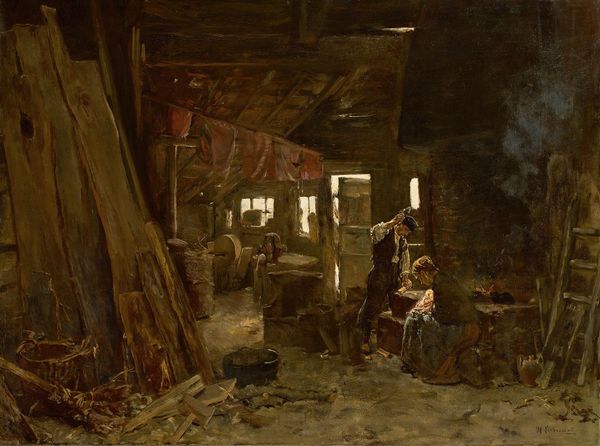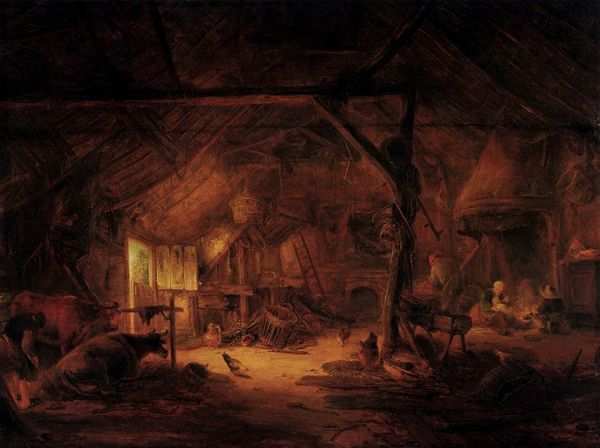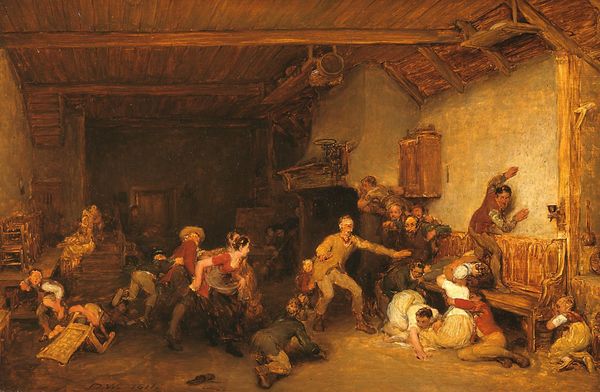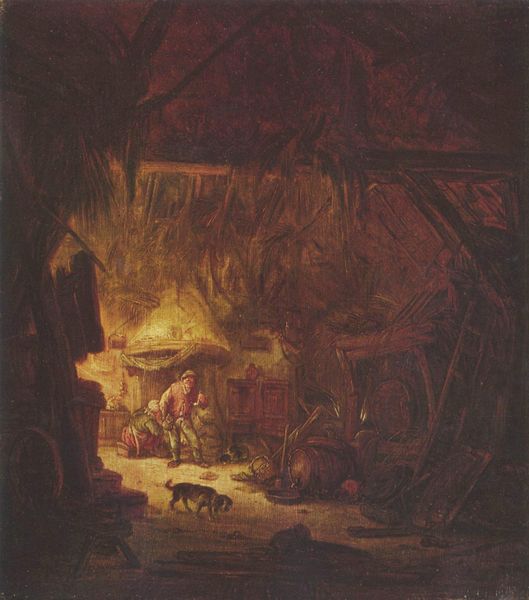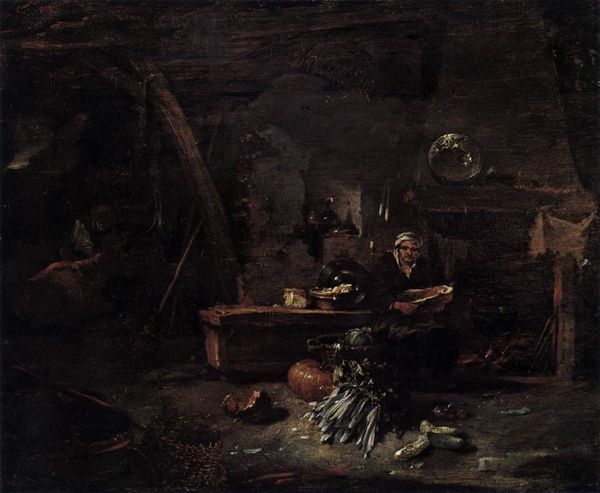
painting, oil-paint
#
dark place
#
dutch-golden-age
#
painting
#
oil-paint
#
landscape
#
eerie mood
#
figuration
#
derelict
#
dark silhouette
#
dark shape
#
gloom
#
chiaroscuro
#
gloomy
#
genre-painting
#
murky
#
dark vibe
#
realism
#
shadow overcast
Dimensions: 50 x 68 cm
Copyright: Public domain
Editor: We are looking at Isaac van Ostade's "Farmhouse Interior" from 1642, executed in oil paint. The composition is quite striking; the dramatic contrast of light and shadow immediately creates a somewhat gloomy atmosphere. What aspects of the painting stand out to you from a Formalist perspective? Curator: The artist masterfully orchestrates a visual dialogue between light and darkness. Note how the composition adheres to the classical, almost architectural organization of forms, carefully balanced in their distribution across the picture plane. The textures too command attention; Ostade coaxes such varied qualities from oil paint: consider the rough, tactile rendition of the wooden beams, contrasting with the subtle luminosity emanating from the doorway. Editor: I see that. The texture really gives it a sense of realism despite the obviously staged composition with the darkness framing the light. But isn't realism a bit contrary to formalist ideals? Curator: The degree to which the artwork succeeds as realism is of lesser importance to formalism than how skillfully Ostade balances color and tone across the plane. Are there certain formal strategies visible at the center of the image that appear more successful to your eye? Editor: Now that you mention it, the gradient from shadow to light looks almost like two separate images merged together. One uses muted earth tones, and the other one utilizes almost neon shades of white and yellow. I wonder if he did that intentionally to create two points of perspective? Curator: Precisely. The interplay transcends mere representation. It serves an internal formal logic – that the shapes relate less to real-world equivalents, and more to an underlying formal grid. A structure to the work. It is that tension itself that generates pictorial interest. Editor: It is fascinating how a formalist reading reframes what I thought was a somewhat dull landscape painting! I will definitely think more about the formal qualities in artwork now.
Comments
No comments
Be the first to comment and join the conversation on the ultimate creative platform.
